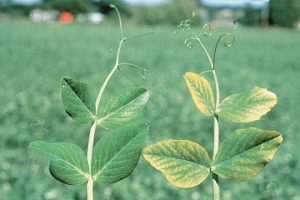From cell walls to photosynthesis: How does manganese get to where it needs to go in plants?
The protein BICAT3 is one of the most important manganese distributors in plants. If defective, this can have devastating effects on a plant’s growth; its leaves grow significantly smaller and it produces fewer seeds than usual. A team has recently uncovered a transport pathway for manganese in plants and the role that BICAT3 plays in this process. The results could lay the groundwork for improved crop growth.
Manganese is an important nutrient for all living creatures. The trace element is a component of enzymes, the proteins that control all the chemical reactions in cells. In humans, it plays a vital role in building connective tissue, cartilage and bones. “In plants, the enzymes that build cell walls need manganese to function. Manganese also plays a key role in photosynthesis,” explains Professor Edgar Peiter, a plant researcher from MLU. For the study, his team investigated how manganese is supplied to the enzymes responsible for building cell walls.
More information here


